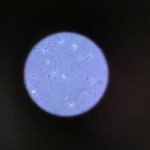Heart disease is a major cause of death worldwide – responsible for some 9 million deaths a year. But it is preventable, and health behaviour changes – such as exercising more, quitting smoking and eating healthier – are often recommended.
One diet change commonly recommended by experts is to eat fewer saturated fats – and instead consume polyunsaturated fats (typically found in nuts, vegetable oils and fish), which are considered healthier. But our new research suggests that instead of only paying attention to the amount of saturated fat we consume, we should also look at what food sources the saturated fat is coming from.
Until now, most research on saturated fats has focused solely on looking at saturated fat and its link with heart disease. But foods contain many different types of nutrients. This is why it’s important to investigate which foods containing saturated fats are linked to heart disease, rather than only considering saturated fat alone. This is what our research set out to do.
Our research drew on data from the University of Cambridge’s EPIC-CVD study, which looked at the cardiovascular health of middle-aged people in ten European countries. This included 10,529 participants who developed heart disease during the study, whom we compared against 16,730 participants who did not. Participants were randomly selected from the 385,747 participants of the EPIC study to ensure our findings were representative of the whole study population. We also looked at data on their dietary habits as part of our analysis.
We made sure to take into account various factors that may be related to heart disease – such as a person’s age, sex, physical activity levels, whether they smoked or drank alcohol and whether they were overweight or obese. This minimised the chances that our findings about fat consumption and heart disease might actually be explained by these other factors.
We found no overall link between the amount of saturated fats participants consumed and their risk of developing heart disease. But this picture was different when we looked at foods that are typical sources of saturated fats.
We found that people who ate more saturated fats from red meat and butter were more likely to develop heart disease. The opposite was true for those who ate more saturated fats from cheese, yoghurt and fish – which were actually linked to a lower risk of heart disease. These findings are in line with what earlier research has shown about the link between these foods and heart disease. These findings show us that the link between heart disease and saturated fats depends on what food sources it comes from.

Natalia Lisovskaya/ Shutterstock
One caveat with our research is that it’s based on observing the associations between diet and health. As such, this cannot prove cause and effect. However, conducting a randomised controlled trial, where participants would be randomly assigned a certain diet to follow for many years, would probably be impractical – and many participants may not wish to stick to a specific diet for the length of the study.
More than one nutrient
Foods are more than just the sum of their parts. They contain many different nutrients, vitamins, minerals and properties that may act together to prevent or cause certain diseases.
For example, although cheese and yoghurt contain saturated fats, they also contain nutrients such as vitamin K2 and probiotics. Each of these nutrients may affect heart disease risk through different interrelated pathways – such as by their effects on blood sugar, cholesterol levels or inflammation.
Previous studies have also shown that different saturated fats carry different levels of risk when it comes to heart disease. For instance, palmitic acid (a sub-type of saturated fat) is more abundant in red meat compared to cheese and yoghurt. Research shows that it may have a detrimental effect on the levels of cholesterol circulating in our blood – a well known risk factor for heart disease.
In contrast, pentadecanoic acid (another sub-type of saturated fat, commonly found in dairy) is generally linked with lower risk of heart disease. This shows us that ultimately, our health is affected by the combination of all the nutrients and bioactive components (including vitamins, minerals and phytochemicals) in the foods we eat. This is why it’s important to consider the foods we eat alongside the nutrients they contain.
Preventing heart disease depends on numerous factors, such as being physically active, not smoking and adopting a healthier diet. But as our research shows, reducing saturated fat intake may not be enough for reducing risk. Rather, it’s about focusing more on reducing foods such as red meat and butter which are linked to a significantly higher risk than other foods that contain saturated fats.
![]()
Marinka Steur received funding from Medical Research Council Epidemiology Unit (MC_UU_00006/3) and was also supported by the British Heart Foundation for part of this work. She declares no conflict of interest.
Nita Forouhi receives funding from Medical Research Council Epidemiology Unit (MC_UU_00006/3) and National Institute of Health Research Cambridge Biomedical Centre Nutrition, Diet, and Lifestyle Research Theme (IS-BRC-1215-20014). She is an NIHR Senior Investigator. She declares no conflict of interest.









